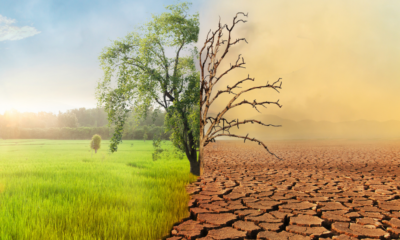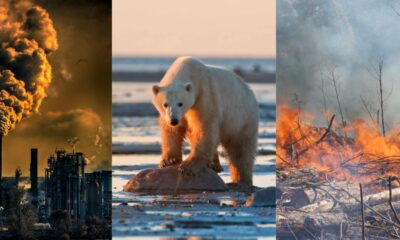TRAVEL
Antarctica: A Majestic Frozen Continent
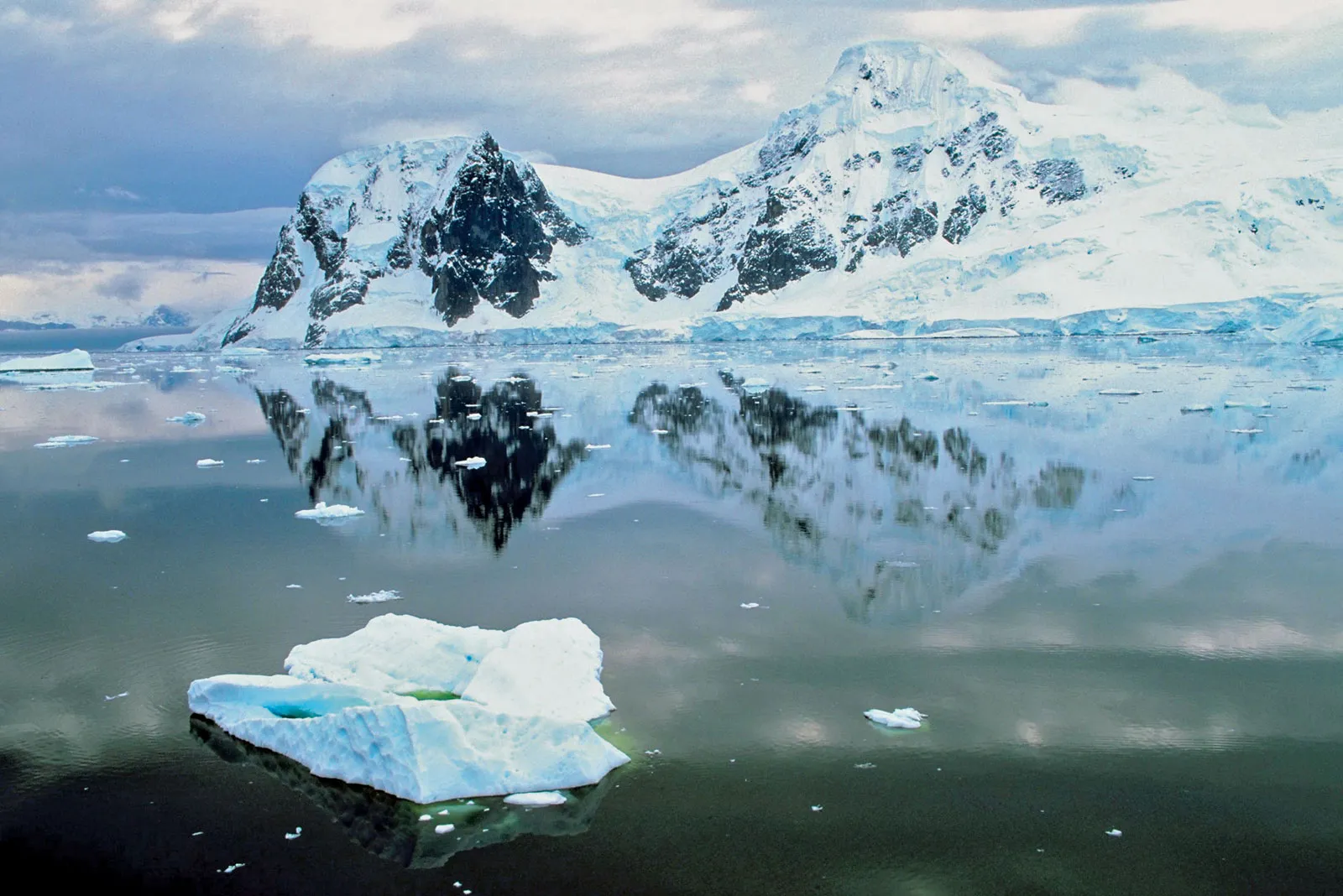
Introduction:
Welcome to the fascinating world of Antarctica, the coldest, driest, and windiest continent on Earth. Located in the southernmost part of the planet, Antarctica remains one of the most enigmatic and pristine regions, offering a wealth of natural wonders and scientific discoveries. In this comprehensive article, we will delve into the breathtaking beauty, remarkable wildlife, environmental significance, and ongoing research in Antarctica. Join us as we uncover the secrets of this majestic frozen continent
Antarctica

Antarctica, often referred to as the “White Continent,” is a vast landmass covered in ice and surrounded by the Southern Ocean. It spans an area of approximately 14 million square kilometers, making it the fifth-largest continent. Despite its extreme climate conditions, Antarctica is home to a diverse range of wildlife and boasts awe-inspiring landscapes that attract scientists, explorers, and adventure enthusiasts from around the globe.
Wildlife
Antarctica is teeming with a myriad of remarkable wildlife species that have uniquely adapted to the harsh conditions of this frozen continent. The rich marine ecosystem is inhabited by various marine mammals such as seals, whales, and penguins. Emperor penguins, with their distinctive black and white plumage, are a beloved symbol of Antarctica. On land, hardy birds like the snow petrel and Antarctic petrel soar through the frigid air, while Weddell seals and Antarctic fur seals find refuge along the coasts. The incredible biodiversity found in Antarctica’s wildlife is a testament to nature’s resilience and adaptability.
Environmental Significance
Antarctica plays a crucial role in regulating Earth’s climate system and preserving the delicate balance of our planet. The massive ice sheets and glaciers store approximately 90% of the world’s freshwater, helping regulate sea levels. The continent’s vast ice shelves also reflect sunlight back into space, mitigating the effects of global warming. Additionally, Antarctica’s isolation from human activities offers a unique opportunity to study natural processes and gain insights into Earth’s past and future.
Scientific Research
Antarctica serves as a living laboratory for scientists from various disciplines. Research stations dot the icy landscape, providing a platform for groundbreaking studies in fields such as climatology, glaciology, marine biology, and astrophysics. Scientists delve into the mysteries of Antarctica’s ice cores to unravel the planet’s climatic history, study the behavior of marine creatures in extreme conditions, and investigate the effects of cosmic radiation in a pristine environment. These discoveries contribute to our understanding of the planet and offer valuable insights into pressing global issues.
Climate and Weather
Antarctica experiences some of the most extreme weather conditions on Earth. The continent’s interior is the coldest place, with temperatures plunging below minus 80 degrees Celsius. Fierce winds, known as katabatic winds, can reach hurricane-like speeds and shape the landscape. However, along the coasts, the milder maritime climate allows for the existence of unique ecosystems and wildlife. The study of Antarctica’s climate and weather patterns provides crucial data for predicting global weather patterns and climate change impacts.
Historical Significance
Antarctica’s exploration and discovery have captivated the human imagination for centuries. From the early expeditions led by Roald Amundsen and Robert Falcon Scott to the heroic era of Antarctic exploration, the tales of courage, endurance, and scientific breakthroughs have become legendary. Historical sites such as Scott’s Hut and Shackleton’s Hut serve as reminders of the triumphs and tragedies of the early explorers. These stories inspire modern-day adventurers and continue to shape our understanding of Antarctica’s past.
Tourism and Exploration
Antarctica’s pristine beauty and unique ecosystems have also attracted tourists eager to experience the icy wilderness firsthand. Today, carefully regulated tourism allows visitors to witness the grandeur of Antarctica while minimizing ecological impacts. Cruise ships and guided tours provide opportunities for wildlife sightings, iceberg encounters, and visits to research stations. Responsible tourism practices are crucial to preserving the delicate balance of this fragile ecosystem and ensuring future generations can marvel at its wonders.
Ongoing Challenges
Antarctica faces numerous challenges in the modern era. Climate change poses a significant threat to the continent, leading to the melting of ice shelves, rising sea levels, and disruptions in marine and terrestrial ecosystems. Human activities, such as fishing and pollution, also impact the delicate balance of Antarctica’s ecosystems. Balancing conservation efforts, scientific research, and sustainable development is essential to safeguard the continent’s fragile environment and its unique wildlife.
Safety Measures
Safety is paramount in Antarctica due to its extreme climate and challenging conditions. Travelers and scientists must adhere to strict safety protocols to ensure their well-being. Proper equipment, adequate training, and emergency preparedness are crucial in mitigating risks associated with cold temperatures, strong winds, and the potential for crevasses. Safety measures are continuously updated based on scientific knowledge and best practices to protect those who venture into this remote and unforgiving environment.
Sustainable Practices
Preserving the pristine beauty of Antarctica requires sustainable practices and responsible stewardship. Efforts are made to minimize waste generation, limit the carbon footprint of research stations and tourism activities, and prevent the introduction of invasive species. Collaboration between governments, scientific organizations, and tour operators aims to establish guidelines for sustainable tourism and ensure long-term preservation of this fragile ecosystem.
International Cooperation
Antarctica is a testament to international cooperation and diplomacy. The Antarctic Treaty System, signed in 1959, sets aside Antarctica as a scientific preserve and prohibits military activities, mineral mining, and nuclear testing. It promotes peaceful scientific research and environmental protection, encouraging collaboration among nations. The success of this unique treaty demonstrates humanity’s ability to come together for the greater good of our planet.
Indigenous Presence
The indigenous peoples of Antarctica, such as the Inuit and Maori, have a deep connection with this frozen land. Their traditional knowledge and cultural heritage contribute to our understanding of the continent’s ecosystems and provide valuable insights into sustainable practices. Respecting and incorporating indigenous perspectives is crucial in the ongoing stewardship of Antarctica and the protection of its unique biodiversity.
Impact of Climate Change
Antarctica is on the frontline of climate change, experiencing rapid warming and glacial retreat. The melting ice sheets contribute to rising sea levels, which threaten coastal communities worldwide. The changing climate also impacts wildlife populations, disrupts marine ecosystems, and alters weather patterns globally. Understanding the consequences of climate change in Antarctica is vital for developing effective mitigation and adaptation strategies to address this global challenge.
Marine Life
Antarctica’s surrounding seas host a remarkable array of marine life. Krill, a small shrimp-like crustacean, forms the foundation of the Antarctic food web, supporting a diverse range of species, including whales, seals, and seabirds. Unique fish species, such as the Antarctic toothfish and icefish, have adapted to survive in sub-zero waters. Studying the intricate relationships between marine organisms provides insights into the resilience and vulnerability of ecosystems in the face of environmental change.
Terrestrial Flora
Despite the harsh conditions, Antarctica harbors a surprising variety of terrestrial flora. Mosses, lichens, and algae cling to rocky surfaces, painting the landscape with vibrant hues during the brief summer months. These hardy plants play a crucial role in soil formation and provide a habitat for invertebrates. Understanding the resilience and adaptations of Antarctic flora contributes to our knowledge of how ecosystems respond to environmental challenges.
Ice Formations
The mesmerizing ice formations of Antarctica are a sight to behold. From towering icebergs, sculpted by wind and waves, to intricate ice shelves extending over the ocean, these frozen formations are nature’s masterpieces. Ice caves, crevasses, and icefalls showcase the dynamic nature of this frozen continent. Studying the formation and movement of ice contributes to our understanding of climate processes, sea-level rise, and the Earth’s cryosphere.
Polar Expeditions
Polar expeditions offer intrepid explorers the opportunity to embark on thrilling journeys across the vast expanses of Antarctica. Whether by ski, dogsled, or specialized vehicles, adventurers can traverse the icy terrain and experience the unparalleled beauty of this remote wilderness. These expeditions often provide invaluable data for scientific research, enabling the exploration of uncharted territories and the documentation of previously unknown species and features.
Weather Patterns
The weather patterns in Antarctica are influenced by a variety of factors, including air masses, ocean currents, and the continent’s topography. The interaction between cold polar air and warmer air from the Southern Ocean gives rise to unique weather phenomena. Blizzards, whiteouts, and sudden temperature fluctuations are common in this dynamic environment. Understanding Antarctic weather patterns is crucial for logistical planning, scientific research, and ensuring the safety of those living and working on the continent.
Aurora Australis
The mesmerizing Aurora Australis, or the Southern Lights, is a celestial spectacle that illuminates the Antarctic night sky. Dancing ribbons of colorful lights, predominantly green but also including shades of red, pink, and purple, mesmerize those lucky enough to witness this natural phenomenon. The interaction between solar particles and Earth’s magnetic field creates this captivating display. Photographing and studying the Aurora Australis contribute to our understanding of Earth’s magnetosphere and its connection to space weather.
Geology and Landforms
Antarctica’s geological history is etched into its breathtaking landforms. Majestic mountain ranges, including the Ellsworth Mountains and the Transantarctic Range, punctuate the icy expanse. Deep valleys, carved by ancient glaciers, reveal the continent’s tumultuous past. The study of Antarctica’s geology provides insights into plate tectonics, past climate conditions, and the formation of the supercontinent Gondwana. These geological features offer a window into Earth’s history and the forces that shape our planet.
Remote Sensing
Remote sensing technologies play a crucial role in understanding Antarctica’s vast and inaccessible terrain. Satellites equipped with advanced sensors collect data on ice extent, temperature, and glacial movements, providing valuable information for climate modeling and environmental monitoring. These remote sensing techniques allow scientists to monitor changes in Antarctica’s ice sheets, study the impact of climate change, and make predictions about future sea-level rise.
Ecosystem Dynamics
Antarctica’s ecosystems are intricately interconnected, with changes in one component reverberating throughout the entire system. Studying ecosystem dynamics in this extreme environment helps scientists understand how species adapt, migrate, and respond to environmental stressors. Investigating the delicate balance between predators and prey, the influence of human activities, and the impact of climate change on Antarctic ecosystems contributes to our broader understanding of ecology and informs conservation efforts worldwide.
Fauna Adaptations
The fauna of Antarctica has evolved remarkable adaptations to survive in this hostile environment. Penguins’ streamlined bodies and insulating feathers enable them to thrive in freezing waters. Weddell seals possess unique diving capabilities, allowing them to navigate beneath the ice and access food sources. Albatrosses and petrels have developed extraordinary navigation skills to cover vast distances in search of prey. Unraveling the secrets of these adaptations provides insights into evolutionary processes and inspires biomimicry in various fields.
Exploring Antarctica
Exploring Antarctica, whether in person or through virtual means, is a transformative experience that leaves an indelible impression. From the ethereal beauty of icebergs to the raucous symphony of penguin colonies, every moment in Antarctica is a testament to the power and resilience of nature. By fostering a sense of wonder and appreciation for this fragile ecosystem, we can work together to protect Antarctica and ensure its preservation for generations to come.
Conclusion
Antarctica remains a captivating and awe-inspiring continent, offering endless discoveries and scientific insights. From its remarkable wildlife to its stunning landscapes and critical role in Earth’s climate system, Antarctica is a treasure trove of knowledge and beauty. As we navigate the challenges of the modern world, it is crucial to recognize the significance of Antarctica and prioritize its preservation. By fostering international cooperation, embracing sustainable practices, and promoting scientific research, we can safeguard this frozen wonderland and continue unraveling its secrets.
FAQs
- What is the average temperature in Antarctica?
- The average temperature in Antarctica ranges from minus 10 to minus 60 degrees Celsius, making it the coldest place on Earth.
- Can you see the Northern Lights in Antarctica?
- No, the Northern Lights, or Aurora Borealis, can only be seen in the Northern Hemisphere. Antarctica experiences the Southern Lights, known as the Aurora Australis.
- How many research stations are there in Antarctica?
- There are numerous research stations in Antarctica, operated by different countries. The exact number varies, but it is estimated that there are around 40 active research stations during the summer season.
- Are there any permanent residents in Antarctica?
- Antarctica has no permanent residents in the sense of a native population. However, scientists and support staff from various countries reside in research stations for extended periods, conducting scientific research and maintaining station operations.
- Are there any indigenous peoples in Antarctica?
- No indigenous peoples are native to Antarctica. However, some indigenous groups from other regions, such as the Inuit and Maori, have connections to the continent and contribute to its scientific research.
- Can you go on a cruise to Antarctica?
- Yes, carefully regulated tourism allows visitors to explore Antarctica through cruises. These cruises provide opportunities to witness the stunning landscapes, encounter wildlife, and visit research stations while adhering to strict guidelines to minimize environmental impact.

Antarctica
TRAVEL
myfavouriteplaces.org:// Blog | Travel’s Best-Kept Secrets
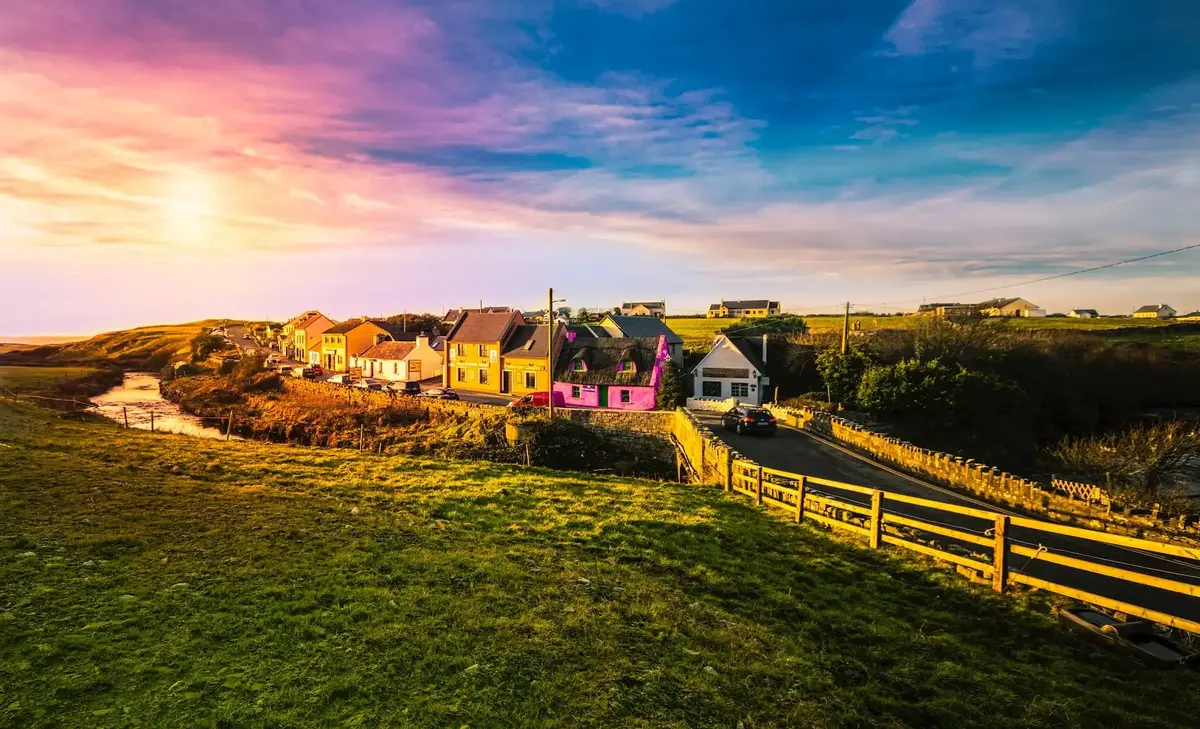
Myfavouriteplaces.org://Blog, Traveling is an adventure that allows us to explore new cultures, indulge in exotic cuisines, and marvel at breathtaking landscapes. While popular tourist destinations often steal the spotlight, there’s something truly magical about uncovering travel’s best-kept secrets. In this article, we’ll delve into myfavouriteplaces.org, a blog dedicated to revealing the hidden gems of the world.
Introduction to myfavouriteplaces.org:// Blog
myfavouriteplaces.org is a treasure trove of travel inspiration, focusing on undiscovered destinations and unique experiences. Unlike conventional travel guides that highlight well-trodden paths, this blog is dedicated to showcasing the hidden gems that often go unnoticed by mainstream travelers.
Creation of myfavouriteplaces.org:// Blog
Immerse yourself in the origins of the blog myfavouriteplaces.org://, where the spirit of discovery and the love of the unexplored meet. This digital odyssey has its roots in the adventures of Simon and Susan, brave souls who dared to break free from the shackles of routine.
Imagine this: A couple, driven by an insatiable wanderlust, says goodbye to everyday business life and embarks on a transformative journey through 50 countries. The experiences gained during this trip became the basis for something extraordinary: a blog that goes beyond the ordinary.
Upon their return, Simon and Susan founded myfavouriteplaces.org://Blog, a virtual paradise where travel enthusiasts, philosophers and curious minds come together. It’s not just a platform; It is a testament to the belief that the world is full of wonders waiting to be discovered.
So as you browse these virtual pages, remember that every word and image is imbued with genuine exploration. This isn’t just a blog; It is an echo of steps into uncharted territory, an invitation to travel and a celebration of the creation of the blog myfavouriteplaces.org://. Prepare for an encounter with the extraordinary.
myfavouriteplaces.org:// Blog Uncover hidden treasures
Embark on a journey beyond the ordinary as the myfavouriteplaces.org:// blog reveals the world’s best-kept secrets – the hidden treasures that elude the average traveler’s view. These are not just travel destinations; They are a touch of authenticity, hidden from the hustle and bustle of the crowds, waiting to be discovered by intrepid souls looking for something more than the usual tourist fare.
You may be wondering why hidden treasures are important. They are important because they provide access to real cultural experiences, a chance to forge a deeper connection to the pulse of a place far from the beaten path. In a world often overshadowed by resorts, these gems are a testament to the beauty of the unexplored.
Our journey through these hidden gems is not just a list of places to visit; It is an ode to the unique, the intact and the culturally rich. These places exude authenticity and tell stories that go beyond the boundaries of conventional tourism.
myfavouriteplaces.org:// Blog Exploring Travel’s Best-Kept Secrets
Destination 1: Hidden Gems in Europe
Europe is known for its iconic landmarks and bustling cities, but beyond the tourist hotspots lie hidden treasures waiting to be discovered. From quaint villages tucked away in the countryside to secluded beaches with crystal-clear waters, myfavouriteplaces.org:// blog unveils the lesser-known wonders of Europe, offering travelers a chance to immerse themselves in authentic cultural experiences.
Destination 2: Unexplored Treasures in Asia
Asia is a continent of diversity, with each country offering its own unique blend of traditions, landscapes, and flavors. myfavouriteplaces.org:// blog shines a spotlight on the hidden gems of Asia, from remote mountain villages to hidden temples nestled in lush forests. Travelers can escape the crowds and embark on a journey of discovery, encountering the rich tapestry of cultures that make Asia so captivating.
Destination 3: Secret Spots in the Americas
The Americas boast a wealth of natural beauty, from the rugged landscapes of Patagonia to the pristine beaches of the Caribbean. However, beyond the well-known attractions lie secret spots waiting to be explored. myfavouriteplaces.org:// blog reveals hidden natural wonders and off-the-beaten-path destinations, allowing travelers to connect with the land and its people in a meaningful way.
myfavouriteplaces.org:// Blog expert advice
Real travel perspectives:
Discover valuable tips and insights from real travelers who have experienced the destinations first-hand.
Gain knowledge beyond the typical information found in standard manuals.
Unusual Jewels:
Discover hidden gems, charming cafes and local retreats off the beaten tourist path.
Discover unique and less explored places for a more authentic travel experience.
Cultural navigation:
Get guidance on how to navigate and understand foreign cultures with ease.
Learn about local customs, traditions and unspoken rules to promote cultural immersion.
Personal experiences:
Immerse yourself in the journeys of fellow travelers as they share their personal experiences.
Experience the emotions, challenges and joys of exploring new destinations through first-hand accounts.
Beyond standard routes:
Forget generic travel plans with personalized suggestions for a unique and unforgettable trip.
Discover unconventional itineraries that showcase the richness and diversity of each destination.
These points highlight the authenticity and depth of the advice on the myfavouriteplaces.org:// blog and ensure that readers receive valuable, real-world information for their travel adventures.
Why Choose Offbeat Travel?
While popular tourist destinations offer their own allure, there’s something special about venturing off the beaten path. By choosing offbeat travel experiences, travelers can avoid the crowds and discover hidden gems that are often overlooked by guidebooks. Whether it’s stumbling upon a charming café in a quiet alleyway or stumbling upon a hidden waterfall in the jungle, offbeat travel allows for unforgettable moments of discovery.
Tips for Discovering Hidden Gems
Discovering hidden gems requires a combination of research and spontaneity. By doing some homework beforehand and seeking recommendations from locals, travelers can uncover hidden treasures that aren’t listed in guidebooks. Embracing spontaneity and being open to unexpected adventures can also lead to serendipitous discoveries that enrich the travel experience.
Making the Most of Your Travel Experience
To truly make the most of your travel experience, it’s essential to immerse yourself in the local culture. Whether it’s striking up a conversation with a street vendor or participating in a traditional dance performance, engaging with locals can provide valuable insights and create meaningful connections. Additionally, don’t be afraid to step out of your comfort zone and try new things, whether it’s sampling exotic street food or embarking on a thrilling outdoor adventure.
Conclusion
In a world where travel has become increasingly commercialized, myfavouriteplaces.org reminds us of the beauty of exploring off the beaten path. By venturing beyond the tourist hotspots and uncovering hidden gems, travelers can create unforgettable memories and forge deeper connections with the places they visit. So, next time you’re planning a trip, consider straying from the beaten path and embarking on an adventure of discovery with myfavouriteplaces.org.
Unique FAQs
- Why should I choose offbeat travel destinations?
- Offbeat travel destinations offer unique experiences away from the crowds, allowing for a deeper connection with the local culture and environment.
- How can I find hidden gems when planning my trip?
- Researching lesser-known destinations and seeking recommendations from locals are great ways to uncover hidden gems.
- Are offbeat travel destinations safe to visit?
- While offbeat travel destinations may lack the infrastructure of popular tourist spots, they are often safe to visit, offering authentic experiences away from the crowds.
- What are some benefits of exploring hidden gems?
- Exploring hidden gems allows travelers to avoid tourist traps, experience authentic culture, and create unforgettable memories.
- How can I support local communities when visiting offbeat destinations?
- Supporting local businesses, engaging with locals, and respecting the environment are all ways to contribute positively to the communities you visit.
TRAVEL
DEVAN CHRISTOPHER ANDERSON’S VACATION/ LEISURE/ PARTY TOUR LIST

One of the privileges that come with being Devan Christopher Anderson is getting to vacation in some of the most exclusive destinations on the planet. Having a healthy bank account and a well-known name means you can escape to exotic locations that most people haven’t even heard of and be pampered in some of the best resorts in the world. Scattered all over the globe, the top vacation spots of the elite boast some of the prettiest scenery. They are also home to exclusive dining and entertainment venues, isolated and private beaches, and the filming locations of blockbuster hits.
United States Travel •
All Historical Black College Universities HOME COMING EVENTS/ SOCIALS/ SHOWS/ CLUBS/ Concerts •
Jacksonville, FL
• Orlando, FL
• Ft. Lauderdale,
FL • Miami South Beach,
FL • Washington,
DC • New York,
NY • Atlanta, GA
• Charlotte, NC
• Baltimore,
MD • New Orleans,
Louisiana
• Alabama , Montgomery
• Dallas, TX
• Houston, TX
• Chicago, IL
• Virginia Beach, VA
• Hollywood, Beverly Hills, Santa Monica, Burbank, Malibu, California
• Los Vegas, Nevada International Travel
• Bahamas, Caribbean
• Jamaica, Caribbean
• Nigeria, Africa
• Dubai, United Arab Emirates
• Egypt, Africa
• Cancun, Mexico
• Dominican Republic, Caribbean
• Puerto Rico, San Juan
• Columbia, South America
• Brazil , South America
• Peru, South America
• Toronto, Canada
TRAVEL
Philippines Tourism: Unlocking the Beauty of the Pearl of the Orient Seas
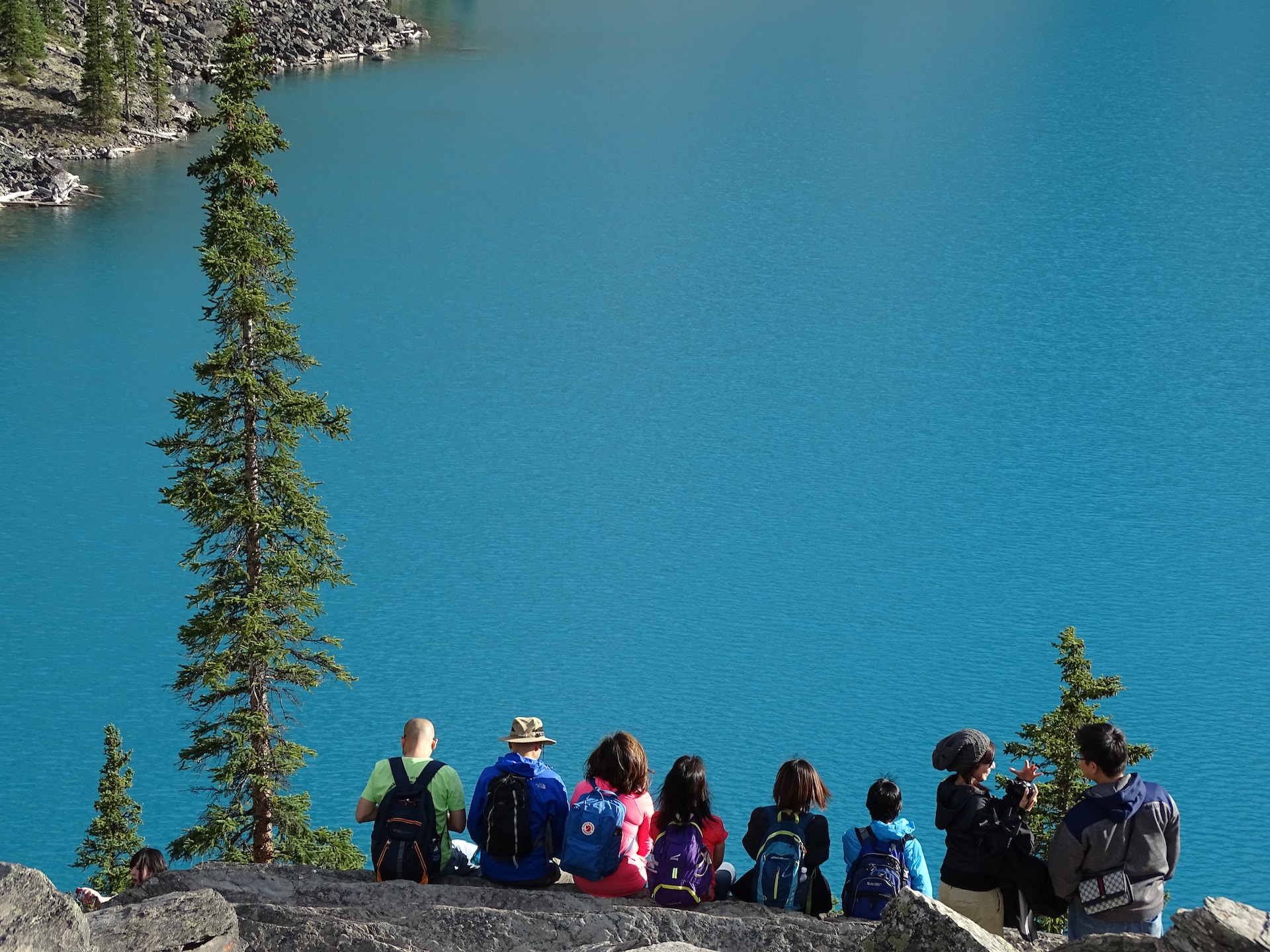
Explore the enchanting wonders of Philippines tourism, where sun-kissed beaches, vibrant culture, and warm hospitality await. Discover the top destinations, travel tips, and must-try experiences in the Pearl of the Orient Seas.
Introduction
Welcome to the Philippines, a tropical paradise brimming with natural beauty and rich cultural heritage. In this guide, we’ll take you on a journey through the heart of Philippines tourism, uncovering hidden gems and providing insider tips for an unforgettable experience.
The Allure of Philippines Tourism
Philippines Tourism: An Overview Dive into the diverse tapestry of Philippines tourism, from pristine beaches to lush mountains. Explore the vibrant cities, each with its unique charm, and discover why this archipelago is a traveler’s dream.
Island-Hopping Extravaganza Embark on an island-hopping adventure, where turquoise waters and powdery white sands beckon. From Boracay to Palawan, each island offers a unique blend of tranquility and excitement, making it a haven for beach lovers.
Cultural Mosaic: Local Festivals Immerse yourself in the Philippines’ rich cultural tapestry by joining local festivals. From the lively Sinulog Festival to the colorful Ati-Atihan, experience the warmth of Filipino hospitality and the vibrancy of age-old traditions.
Gastronomic Delights: A Culinary Odyssey Savor the flavors of Filipino cuisine, a delightful fusion of Malay, Spanish, and Chinese influences. Indulge in mouth-watering dishes like adobo, sinigang, and lechon, reflecting the diverse culinary heritage of the country.
Unlocking Hidden Paradises
Off-the-Beaten-Path: Unexplored Treasures Escape the crowds and venture into hidden paradises. Discover the untouched beauty of Banaue Rice Terraces, the mesmerizing Chocolate Hills in Bohol, and the enchanting Enchanted River in Surigao. These lesser-known gems promise a unique and tranquil escape.
Diving Paradise: Tubbataha Reefs Natural Park For underwater enthusiasts, Tubbataha Reefs Natural Park is a marine sanctuary boasting vibrant coral reefs and diverse marine life. Dive into the crystal-clear waters and witness the breathtaking beauty that lies beneath the surface.
Travel Tips for a Seamless Experience
Essential Travel Tips: Navigating the Philippines Ensure a smooth journey with these essential travel tips. From understanding local customs to packing light for island-hopping, these insights will help you make the most of your Philippines tourism adventure.
Best Time to Visit: Chasing Perfect Weather Plan your visit to coincide with the best weather conditions. Whether you seek vibrant festivals or quiet beach retreats, understanding the seasonal variations will enhance your travel experience.
Safety First: Navigating Local Customs Embrace the warm Filipino hospitality by familiarizing yourself with local customs and etiquette. Respectful gestures go a long way in ensuring a positive and memorable trip.
FAQs: Your Philippines Tourism Queries Answered
What are the must-visit islands in the Philippines? Explore renowned islands like Palawan, Boracay, and Siargao for a diverse range of experiences, from pristine beaches to thrilling water activities.
How can I experience local culture during my visit? Immerse yourself in local festivals, visit historical landmarks, and engage with the friendly locals to truly experience the rich cultural heritage of the Philippines.
Are there budget-friendly accommodation options? Yes, the Philippines offers a range of budget-friendly accommodations, from guesthouses to beachfront cottages, ensuring options for every traveler.
What should I pack for island-hopping adventures? Pack lightweight clothing, swimwear, sunscreen, and comfortable footwear for island-hopping. Don’t forget essentials like a reusable water bottle and a camera to capture the stunning landscapes.
Is it safe to explore off-the-beaten-path destinations? While popular destinations are generally safe, exercise caution in remote areas. Always check with locals or hire a guide for a safer exploration experience.
What is the best way to travel between islands? Ferries and domestic flights are common modes of transportation between islands. Plan your itinerary in advance to make the most of your island-hopping adventure.
Philippines Tourism: A Captivating Conclusion
As we conclude our exploration of Philippines tourism, it’s evident that the Pearl of the Orient Seas offers a kaleidoscope of experiences. From sun-drenched beaches to culturally rich festivals, every corner of this archipelago invites you to create lasting memories.
-

 HEALTH2 years ago
HEALTH2 years agoDr. Naval Parikh: Thyroid Disease Signs, Symptoms & Treatment Options
-

 HEALTH2 years ago
HEALTH2 years agoDr. Naval Parikh: Back Injuries, Types, Causes, Symptoms and Treatment
-

 FASHION1 year ago
FASHION1 year agoBest Color Shoes for Men: Making a Style Statement
-
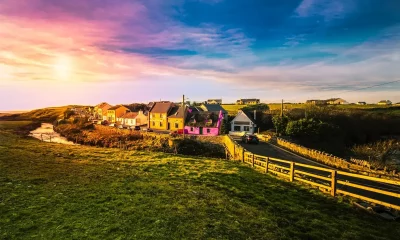
 TRAVEL2 months ago
TRAVEL2 months agomyfavouriteplaces.org:// Blog | Travel’s Best-Kept Secrets
-

 TECH2 years ago
TECH2 years agoHow to Turn Flashlight On iPhone & Off, 3 Easy Ways
-

 Celebrity2 years ago
Celebrity2 years agoDay 3 of Spring 2016 New York Fashion Week’s most inspiring
-

 GAMES2 years ago
GAMES2 years agoAbout Tekken 3
-

 APPS8 months ago
APPS8 months agoWhatsApp Web and Desktop: How do they work and how do you use them?

